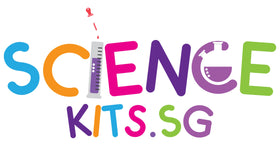
DIY Science Projects with Everyday Materials: Turn Trash into Treasure
Introduction
Who says science projects need fancy equipment or expensive materials? With a little creativity and curiosity, you can turn everyday items—often things you’d normally throw away—into exciting DIY science projects. These projects not only teach valuable scientific concepts but also promote recycling and upcycling, making them eco-friendly as well as educational. In this article, we’ll explore fun and easy science projects that transform trash into treasure, providing hours of hands-on learning using items you already have at home.
1. Balloon-Powered Car

Concepts: Physics, Motion, Air Pressure
Materials Needed:
- Plastic bottle (empty)
- Bottle caps (for wheels)
- Straws
- Balloon
- Tape and scissors
Instructions:
- Create the car body by cutting the bottle in half.
- Attach bottle caps as wheels using straws as axles.
- Tape a balloon to the end of a straw.
- Insert the straw into the bottle, ensuring the balloon sticks out the back.
- Inflate the balloon and let go to see your car zoom forward!
What They’ll Learn: This project demonstrates Newton’s Third Law of Motion: for every action, there is an equal and opposite reaction. The air escaping from the balloon pushes the car forward, teaching kids about air pressure and propulsion.
2. Egg Carton Planters

Concepts: Biology, Ecology, Plant Growth
Materials Needed:
- Egg carton (empty)
- Soil
- Seeds (such as herbs or flowers)
- Water
Instructions:
- Fill each section of the egg carton with soil.
- Plant seeds in the soil, following the instructions for depth and spacing.
- Water the seeds gently and place the carton in a sunny spot.
- Watch as your plants sprout and grow!
What They’ll Learn: This project teaches kids about the life cycle of plants, including seed germination and the importance of sunlight and water for plant growth. It also reinforces the value of upcycling everyday materials for eco-friendly gardening.
3. Bottle Rocket

Concepts: Chemistry, Air Pressure, Reaction Forces
Materials Needed:
- Plastic bottle (empty)
- Baking soda
- Vinegar
- Cork (or similar stopper)
- Paper (for rocket fins)
- Tape
Instructions:
- Decorate your bottle with paper fins to make it look like a rocket.
- Pour vinegar into the bottle.
- Wrap baking soda in a small piece of paper and drop it into the bottle.
- Quickly seal the bottle with the cork and place it on the ground, pointing upward.
- Step back and watch the reaction launch your bottle rocket!
What They’ll Learn: This project demonstrates an acid-base reaction between vinegar (acid) and baking soda (base), producing carbon dioxide gas. The pressure builds up inside the bottle, creating a force that propels the rocket into the air.
4. DIY Kaleidoscope

Concepts: Optics, Reflection, Symmetry
Materials Needed:
- Paper towel tube
- Aluminum foil
- Clear plastic or cling wrap
- Small beads or sequins
- Tape
Instructions:
- Line the inside of the paper towel tube with aluminum foil, shiny side facing inward, to create a reflective surface.
- Cover one end of the tube with clear plastic or cling wrap, securing it with tape.
- Place small beads or sequins on the plastic wrap.
- Cover the other end of the tube with plastic wrap, leaving a little space for the beads to move around.
- Look through the tube and twist it to see colorful, symmetrical patterns!
What They’ll Learn: This project teaches kids about light reflection and symmetry. The kaleidoscope creates beautiful, repeating patterns by reflecting light off the shiny surface inside the tube.
5. Water Filtration System

Concepts: Environmental Science, Filtration, Water Purification
Materials Needed:
- Plastic bottle (empty)
- Coffee filter or cotton balls
- Sand and gravel
- Activated charcoal (optional)
- Dirty water (from outside)
Instructions:
- Cut the bottom off the plastic bottle and turn it upside down.
- Place the coffee filter or cotton balls in the neck of the bottle.
- Layer sand, gravel, and activated charcoal (if available) on top of the filter.
- Pour dirty water through the filter and watch as it becomes cleaner.
What They’ll Learn: This project teaches kids about water filtration and the importance of clean water. They’ll learn how different materials can help remove particles and impurities from water, mimicking natural filtration systems found in the environment.
Conclusion
DIY science projects using everyday materials are a great way to teach kids valuable scientific concepts while promoting creativity, sustainability, and hands-on learning. By turning trash into treasure, children not only gain practical knowledge of science but also develop an appreciation for recycling and upcycling. These projects are fun, educational, and easy to do at home, proving that you don’t need expensive tools to explore the wonders of science.
